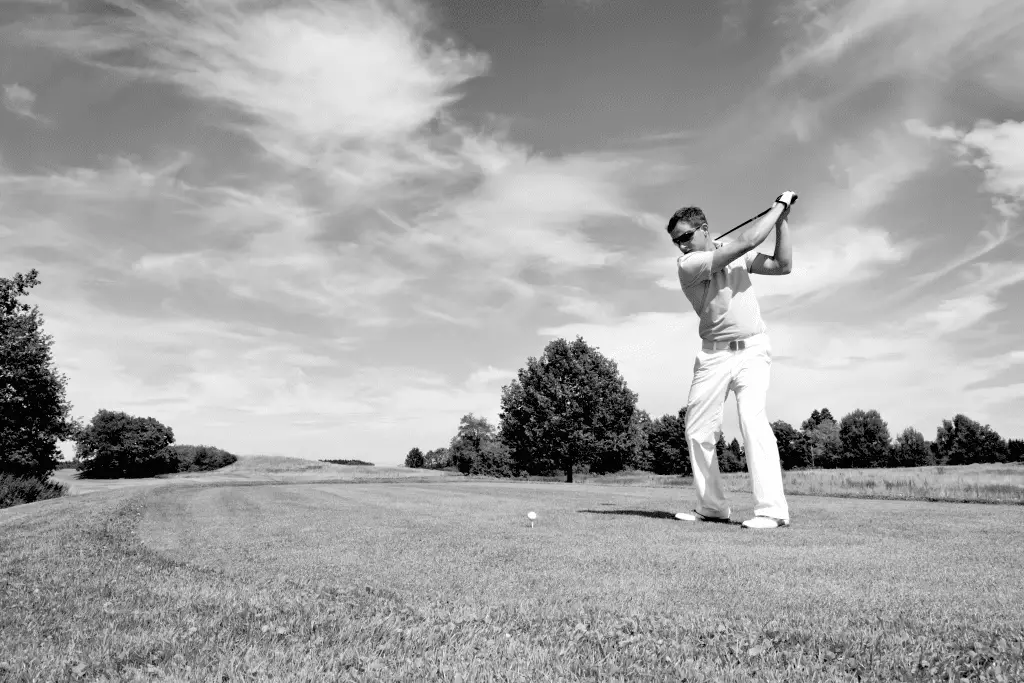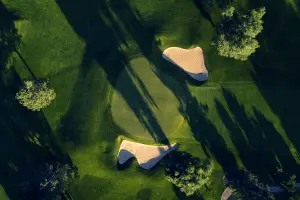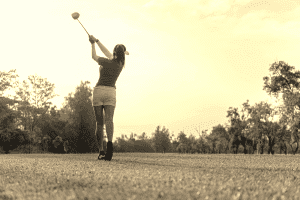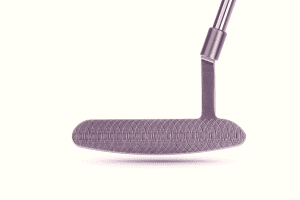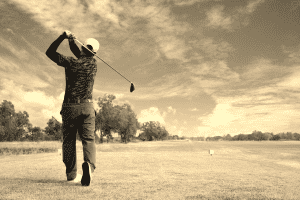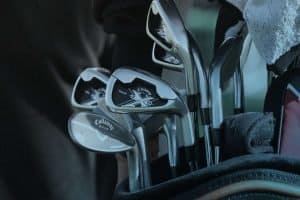While shaping shots is the mark of a true player, most of us would be thankful if we could hit the golf ball straight with more regularity. Fortunately, technology exists that does some of the hard work for you. Low spin golf balls can cut down on unwanted shot shapes and give you longer and straight drives off the tee. A low spin golf ball will give you more distance, and generally will cost less than a tour style golf ball. Today I’ll show you what to look for and offer some great suggestions to help you gain distance off the tee.
Buyers Guide
As with most golf equipment, there is plenty of choices. Here are some areas that you will want to consider when choosing the best low spin golf balls:
Low Spin Golf Balls | The Core and Components
Yes, indeed! Golf balls actually have fairly complex inner components. You’ll often hear golf balls referred to in the number of pieces. A two-piece golf ball doesn’t mean that it is two halves glued together…
Think of it like layers. In the center of the ball, you have the core. This is surrounded by other layers, which are all wrapped in a dimpled cover. The behavior of these layers and how they interact affects the trajectory from the moment the ball touches the clubface.
Here’s a quick rundown of some of the types:
One-piece golf balls
Due to their simple construction, these balls are relatively cheap. As a result, you won’t see them used much anywhere other than the driving range. While they have a low spin rate, they lack any really great features and should only be used for practicing.
Two-Piece golf balls
Two-piece golf balls are some of the best low spin golf balls around. They are still simple in their construction, so they are still good value. The outer cover surrounds a layer of dense material such as Surlyn, a dense and durable polymer. They offer a good blend of performance, distance, and price.
Three-piece golf balls
Three-piece golf balls are a little more advanced. They will have another layer between the core and the cover. This changes the characteristics of the ball’s flight slightly. They give a better feel and tend to be a little softer than two-piece golf balls. However, they can cause an increase in spin rates.
Four-piece golf balls
Four-piece golf balls tend to offer higher spin rates; thus, they are often used by advanced players. There is often a multi-material core, an inner cover, and an outer cover. Due to the complexity of their construction, four-piece balls tend to be a higher price, and are commonly described as tour style golf balls.
Compression
‘Compression’ refers to how ‘squishy’ the golf ball is when it impacts the club. The lower the compression, the ‘softer’ the ball is. If a ball has high compression, it won’t deform and ‘squash’ as readily when it is hit.
Take a look at this slow-motion video to see how much a golf ball actually compresses. It is amazing…
The compression rating of most golf balls is given as a number. Here’s what the numbers mean:
Golf Ball Compression Rating <80 (Low Compression)
Low compression balls deform easily. They do offer great distances. However, they tend to spin quite rapidly; so, it can be difficult to hit straight shots.
Golf Ball Compression Rating 80 – 100 (Medium Compression)
For high handicap golfers on the cusp of becoming intermediate, medium compression golf balls offer good distance and a touch of spin to give control when you need it.
Golf Ball Compression > 100 (High Compression)
High compression golf balls are what is described as ‘hard’. They don’t offer anywhere near as much spin as low compression balls. The upside is that for your long game, you will get a reduction in unwanted sidespin… Which equals straighter shots. The downside is you’ll lose some of the control in your shorter irons as the ball has a low spin rate.
High compression balls are also good for players with fast swing speeds.
Cover Material
When we talk about a ‘cover,’ we traditionally mean the dimpled surface on the outside of the ball. This can actually make a huge difference. This is for two reasons:
At Impact
The cover of the golf ball will grip the clubface as the ball compresses. The less grippy or ‘soft’ the cover is, the less chance there is for spin to be imparted on the golf ball.
Flight Characteristics
The cover can affect how the ball behaves when it is in the air. For example, some covers offer more drag and increase spin, while others offer far less friction with the air and tend to spin much less.
The cover material can often make a ball ‘feel’ harder or softer, regardless of what the core is made from.
Number of Dimples
Dimples aren’t just there for cosmetic reasons. Can you believe that they account for over 50% of the lift produced by the ball!
So, more dimples are better, right?
The true answer is, it depends. There are all sorts of physics and calculations that go into dimples and affect the spin rate of a golf ball. It isn’t just about the number… It can be about the depth too. A microscopic change in the dimple depth can vastly alter how a ball flies!
Most balls will have somewhere in the region of 300 -500 dimples. So your best bet is to try a few out and see which gives the best results.
If you are interested in physics, I’ve got a great video here that explains everything
Price
Listen, I get it.
If you are looking for the best low spin golf balls, there is a good chance that you can be a bit wild with your long game. So, there’s a good chance that you might lose one or two along the way.
For this reason, you aren’t going to be wanting to spend a fortune. When a bad shot costs you $5 per ball, it can start to become costly.
My advice is to go for balls that offer great performance but aren’t going to break the bank if you end up going out of bounds now and again.
Best Low Spin Golf Balls in 2021: Reviewed
With all of the above in mind, I’ve had a look through what’s on offer at the moment and hit the range. Here are the balls we found to be the best low spin golf balls on the market:
Titleist Velocity Golf Balls

Compression: Med-High
Pieces: 2
Feel: Hard
One of Titleist’s main selling points with this two-piece golf ball is that it has extremely low spin in your long game. I must say it works.
The core is slightly softer than your average ‘distance’ ball, and the cover has been manufactured to be fast. What that means for you is that you get the best of both worlds, with a long, penetrating flight and a high trajectory that will give you a degree of control into the greens.
The launch monitor confirmed my feeling. This really is a low-spin golf ball. I’ll be honest, the ball felt a little hard, so I was thankful that Titleist had seen fit to soften it somewhat.
- Multiple colors
- Very low spin
- Reasonably priced
Bridgestone e6 Golf Balls

Compression: Med
Pieces: 2
Feel: Soft
Where the Titleist velocity felt slightly hard, these low spin golf balls from Bridgestone felt surprisingly soft.
These two-piece balls have been custom-built for the average swing speed. Part of the softness comes from a golf ball which could certainly be said to be ‘medium compression’.
This isn’t the lowest spin golf ball on my list, but it is still well up there. On the launch monitor, it was still lower than my usual RPM. And the feel and control you’ll get as you improve make it worth it.
- Great feel
- A decent amount of control
- Really good value
TaylorMade Rocketballz

Compression: Mid
Pieces: 3
Feel: Mid-Soft
TaylorMade seems to have really come up with the goods and produced a low-spin golf ball that is an excellent all-rounder. Get used to playing with these, and you’ll have a solid ball that will take you all the way to intermediate level.
The urethane cover gives the ball a nice soft feel that belies the fact that it is mid-compression. For those used to playing with low spin distance balls, you’ll find it much less ‘clacky’ off the clubface.
When teed up on the launch monitor, I was pretty impressed. The spin was much lower than I’d get with a ‘premium’ ball and gave me a high degree of consistency in distance and line.
- Premium feel (without the price tag)
- Great for consistency
- Good control on short iron shots
Titleist Tour Speed Golf Balls

Compression: Mid
Pieces: 3
Feel: Soft
If you want all of the feel of a truly premium golf ball without the ‘designer’ price tag, then you are in the right place. When it comes to your long game, the Titleist Tour Speed performed just as well as the tried and tested Pro V1.
You will face a downside in your short iron shots, as it has nowhere near the same level of control as the Pro V1, but that said, it is a trade-off. I found that it did offer significantly lower spin without a loss of distance due to the faster speed of the ball off the face.
Those with a fast swing might find it a little too soft and wayward. However, for your average mid-high handicapper, this ball would be a decent choice.
- Matches Pro V1 in distance
- A great ball for the money
- Really soft feel
TaylorMade Noodle Long and Soft

Compression: Low
Pieces: 2
Feel: Soft
Just because this is a cheap golf ball doesn’t make it ‘bargain basement’. On the contrary, it actually performs surprisingly well. As we discussed above, the reason for the price has nothing to do with performance. It’s because this ball is two-piece and cheaper to make. That’s all!
This is a low compression ball. As a result, it feels supremely soft off the face. However, it doesn’t tend to generate as much spin as the more ‘advanced’ three- and four-piece golf balls because of its two-piece construction. As a result, you can expect an admirable level of control in your long game.
I’ll be honest, this isn’t a premium ball… But, for the money, you’ll be getting good distance and something that feels and performs far over its price point.
After smashing a few with the driver on the launch monitor, it offered lower spin than I’d expect from a ‘soft’ ball and wasn’t far shy of my usual distance with balls that are much more expensive.
- Soft feel and low spin
- Fantastic price
- Great for beginners
TaylorMade TP5x Tour Golf Balls

Compression: High
Pieces: 5
Feel: Mid
If the TaylorMade Noodle was a little too budget for your taste, then how’s about something a little more premium? Sure, you’ll pay for the privilege, but TaylorMade promises that this ball will be as long as it gets when you’ve got a great driver in your hand.
Don’t be put off by the ball being 5-piece. The aim of the interior technology is to give you the best of all worlds. A ball that gives low spin and distance off the tee but, as a result of its soft urethane cover, will provide stopping power into the greens.
Checking the numbers, whatever TaylorMade has done inside seems to have worked. The ball was relatively low spin (and much less than I expected). Yet when struck with my mid-irons gave around the spin rates I am used to seeing with a tour ball.
This would be great for those players who feel a little held back by your standard two-piece low spin golf balls and are looking to up their control around the greens.
- Premium performance
- An excellent all-rounder
- Good distance and control
Callaway Chrome Soft Triple Track

Compression: Mid
Pieces: 4
Feel: soft
Callaway also seems to have worked some magic with this golf ball. They’ve taken the unusual step of making it soft with a graphene center and surrounding this with a harder, firmer mantle. The aim is that the ball exits the clubface extremely quickly.
I know what you are thinking…
Doesn’t a lower compression mean more spin? Well, Callaway thought that too, which is why they have made the cover material thinner, meaning a low spin rate when the ball is hit with longer clubs.
This is a great middle-ground as with your shorter shots, you are still going to get a good measure of control in and around the green.
What does this mean for you as a player? With your woods, you’ll get low spin. With irons, you’ll get high spin, and when chipping and putting, you’ll get a great feel and feedback. For the money, this is one of the best low spin golf balls on the market.
- Best of all worlds, control, and distance
- Great feel in the short game
- One of the best low spin golf balls out there.
Best Low Spin Golf Ball | FAQ
So, you’ve got questions? Here are some of the things I am most commonly asked about low spin golf balls:
Should I Use a Low Spin Golf Ball?
If you are asking the question, then chances are, yes, you should. Low spin golf balls are ideally suited for beginners and high handicappers.
Granted, depending on the type you choose, you might be making a compromise in other areas, but worrying about whether you will get the ball to check and stop on the green isn’t going to save you shots… Being on the fairway consistently will.
Do Low Spin Golf Balls Go Straighter?
The simple answer is yes, they do. Low spin golf balls are great for getting a longer flight on the ball. Particularly with woods. The reason for this is that they spin less.
One key advantage is that not only do they reduce backspin, they also reduce sidespin. Sidespin is what causes your shots to have a shape. If you can control it and hit a draw, all good… If you have a strong hook or slice, a low-spin golf ball can minimize the damage.
What Golf Ball has the Lowest Spin Rate?
From the list above, and according to the launch monitor data, the ball with the lowest spin was the Titleist Velocity golf balls. They might be a little hard for advanced players, but they will make for much straighter shots for the high handicapper.
Are Pro V1 Good for Beginners?
Ok, let’s be honest. Pro V1’s are great balls. They feel soft and generate lots of spin. But, the spin is only useful if you can control it. So, if you are getting adverse shapes in your shots, it is best to wait until you hit the ball more consistently. Oh, and they are expensive too!
What is the Most Forgiving Golf Ball?
During my test, I found the Bridgestone e6 to be really consistent. But, of course, that could have been my swing. Still, the Bridgestone e6 offered the tightest dispersion and the least variation in distance compared to the others on my list.
Final Thoughts
There will be a degree of trial and error when you are trying to find the best low spin golf balls for your game. What felt good for me might be entirely different for you, depending on various factors. My advice would be to give a few of the above suggestions a try and see what works.
Low spin (along with a swing in the groove) will help straighten out your shots, leading to better accuracy and distance… Have you played with any on the above list? How did you find them? Let me know in the comments!

